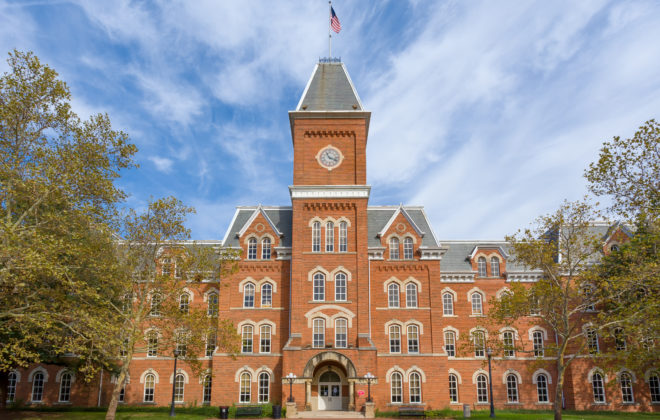- Design backwards from the outcomes that you want to see. Very often, graduate curricula are a hodgepodge of courses that faculty want to teach, rather than courses that students want or need to take. Consider what skills and capacities you want your students to develop and design for those.
- Listen to your students and other stakeholders. This can be facilitated by having a professional staff member who has experience with curriculum and program design involved with the process.
- Even if you have a small committee doing most of the work, which can be the most efficient way to do something like this, be sure to check in with the rest of the faculty regularly so that they have the opportunity to give feedback, ask questions, and express any reservations or concerns they might have.
- Collate all the changes into a single document that is accessible and accurately reflects the program. In addition to serving as the eventual basis for the graduate handbook, it can serve as both conceptual framework and touchstone throughout the process of curriculum revision.
- Bear in mind that curriculum revision is an iterative process that will continue to incorporate feedback and adjust to fit the needs of students as they evolve.
The Ohio State University Graduate Program in Anthropology

Sometimes change can be traced to a single moment or problem. Sometimes, however, it goes back to a critical mass of energetic people who believe that the time is right.
Such is the case with the revised Anthropology PhD program at ACLS Consortium Member The Ohio State University, according to Professor Mark Moritz, director of graduate studies. The program existed for a long time, with few updates, until a core of the department’s faculty felt it was time for a change. This general feeling was confirmed by data of the department’s PhD alumni, which revealed that roughly one-third were in tenure track jobs, one-third were in academic-adjacent positions, and one-third were working in industry. These outcomes were not aligned with the program’s structure, which assumed that all graduates would go on to tenure-track positions in the academy.
Starting in 2017, the department embarked on a process of reconceptualizing its curriculum to be student-centered and to build on the strengths of the department. To help facilitate the process, the department enlisted the help of a staff member, Teresa Johnson, who had experience in program design and curriculum development. Johnson led a few design thinking sessions for the entire anthropology faculty, during which they brainstormed what they wanted their PhD students to be able to do when they graduated. Johnson also facilitated a series of departmental meetings, including one with students only. From there, a small committee of three faculty members working with Johnson extrapolated learning goals and proficiencies and designed the curriculum backwards. They created a curriculum map to help them discuss what they wanted to assess, which courses to keep or create, how to integrate a portfolio model for students to document their progress, and what form the dissertation defense should take.
Although much of the work of revising the program was done by this core committee, care was taken to involve the broader faculty at various points. Teams of two to three faculty members took the lead in developing syllabi for new courses, and the committee regularly shared its work with others. There were certainly some points of resistance, particularly around changes to the qualifying exam. The entire process took about four years and required three faculty votes on various drafts of the curriculum before it passed.
The resulting program is designed to be completed in five years, which is 50% shorter than the average time to degree of 7.5 years in the field of anthropology. It is not an applied program, Moritz noted, but it is intended to prepare students for a mix of academic and nonacademic careers. There is a heavy emphasis on methods and research skills, with five required courses that provide foundational skills and training in anthropological research. Additionally, an ongoing professional development workshop, which students may enroll in for multiple semesters, focuses on revealing the “hidden curriculum” of graduate school, while also exposing students to a variety of careers.
In addition to these changes, the program has three distinctive features:
- The program focuses on three interdisciplinary areas that reflect the department’s academic strength: human evolutionary history, biocultural approaches to health, and socio-ecological systems. These themes encourage collaboration both within the department and beyond it.
- Instead of the traditional three-day take-home qualifying exam, the program requires students to develop and defend a National Science Foundation Doctoral Dissertation Improvement Grant (DDIG) proposal.
- Students are required to develop portfolios modeled on pre-tenure faculty portfolios. The department asks students to submit their CV, grades, and teaching evaluations, as well as supply five brief narratives, the first of which is devoted to career goals and steps that students have taken toward them. Portfolios are submitted yearly and are used as the basis for advising conversations and to check progress towards the degree. Advisors respond to the portfolios in writing to say what they would like each individual student to do in the coming academic year to complete the program and work towards their career goals.
The revised program is only in its second year as of March 2024, so there is not yet data about completion or outcomes. However, it has been successful as a recruiting tool, Moritz says, because the department has a story it can tell about itself that helps students make sense of their grad careers. As of this writing, the department is collecting feedback from students and faculty for the first time since the revisions. This will undoubtedly inform future changes to the curriculum, which ultimately remains a work in progress.

